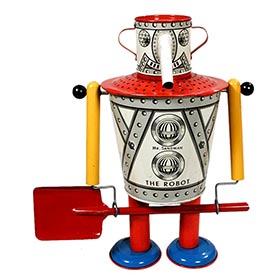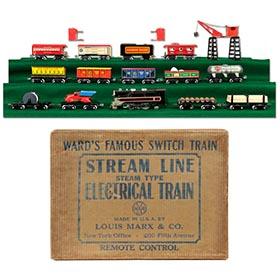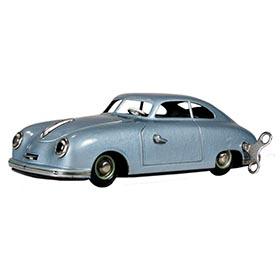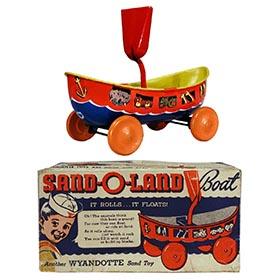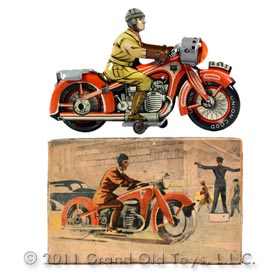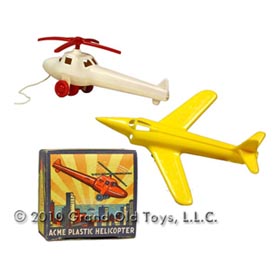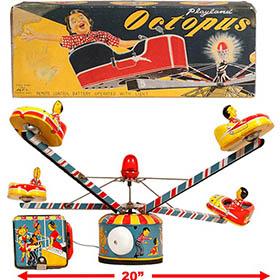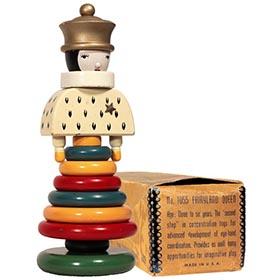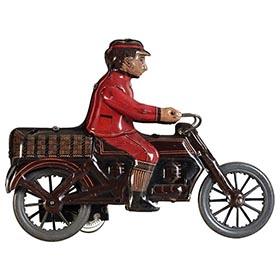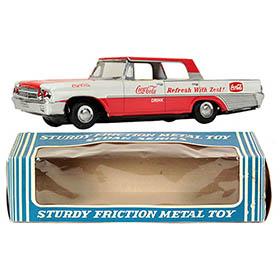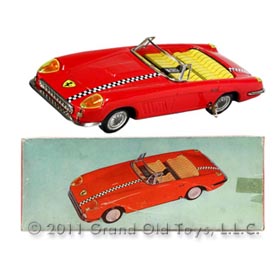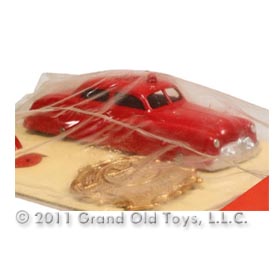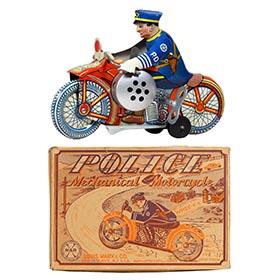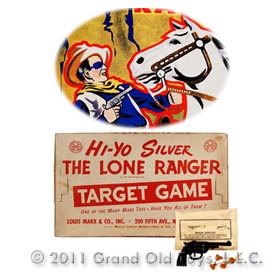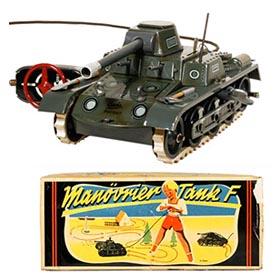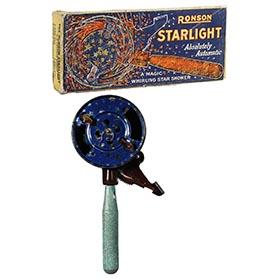c.1927 Lindstrom, Clockwork Road Roller in Original Box

Although an occasional example of this unusual Road Roller can still be found, none I have seen can compare to the overall extraordinary quality of this toy. Manufactured by Lindstrom during the mid to late 1920's the entire machine was made from polished, heavy gauge tinplate. It's not chrome plated and it's not pressed steel. Which is why when it's usually found it's almost always heavily rusted and dented. I purchased it from the estate of the original owner and was told that the clockwork motor was over-wound soon after it was purchased. It was never played with again. This accounts for its fantastic condition. I've since had it repaired and it works great. This also accounts for the presence and unbelievable condition of its original box; complete except for one inner flap. In fact it's the most complete box I've ever seen for the toy. Usually only pieces remain. The weight of a toy like this, nearly two pounds, combined with jagged edges and key will typically quickly destroy a narrow walled cardboard box like this. One unusual characteristic about this toy; it has no formal name. Even on the box there was no name given to it. Just a catalog number 181. This may be because it's difficult to tell whether its an actual steamroller (i.e., powered by steam), or a road roller (powered by fossil fuel). Like the toy, a steamroller has a large exhaust stack, however the mid-section is that of a diesel powered vehicle without a boiler. Regardless of what it represents it's still a fantastic toy. It's made from heavy gauge tinplate polished to a brilliant sheen. This was done to every exposed surface including the roller and the front of the driver's compartment. Only the sides and bottom of the driver's compartment were left unpolished. All edges were folded to give it stability and make it safer to play with. The body was embossed with raised rivet heads and the roof was corrugated to improve its strength. It was not intended to be ridden even though one of the box illustrations shows a boy kneeling behind the roller. It appears as if he's riding the toy, but he's actually in back of it, not on top. The front roller can be steered right or left. The large rear wheels are solid plate and nearly 1" wide at the rim. The smaller pair of wheels (located just to the upper left of the large wheels) ride on a movable axle. They make contact with the larger wheels so all four turn in unison even though they're not physically connected. It uses an attached key (original) to wind the powerful clockwork motor. An internal governor regulates the motor speed and gives it a much more realistic sense of motion. It also allows the motor to run for a longer period of time although I only wound it a few times to test it out. The stop/start lever is located in the driver's compartment and it has a rear tow hook. The box was beautifully illustrated with a panel wide drawing which features a portrait of the roller. Notice the driver operating the roller using the actual start/stop lever! Never seen that before with any toy. Another man is shown digging a trench, while a third man empties a wheelbarrow (while smoking his pipe?). Also notice the road construction sign "Pass at your own risk". That was very often the case during the building of early 20th century roads. The short side panels also include a wide drawing of three boys at play. Their clothing style helps date the toy. The Lindstrom company name was printed on every panel including the endflaps, while the New York address given was the same as Louis Marx and Company. Size: 11½" long x 7½" tall x 5" wide. Sold: Jun. 2008
Price Sold: $ 225
